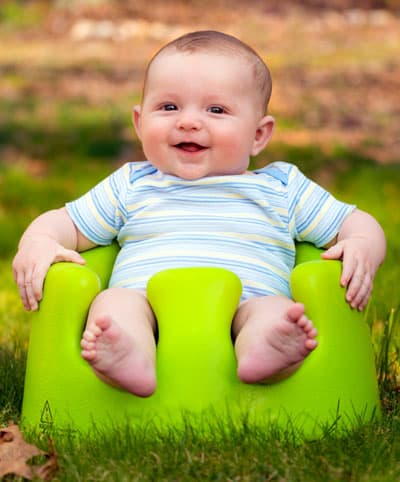Baby’s Development, Months 0 to 3
The first few months after baby is born is often a blur. I’m gearing up to head down that road a second time, and as I try to remember the little things I did with my son when he was first born and how I spent my days, I’m finding the memories to be a bit foggy. Oddly enough, what I do remember is thinking to myself “I don’t need to write anything down, I’m not going to forget a second of this! How could I?!” Well since that ship has mostly sailed, I thought I would go over the motor milestones seen in the first 3 months along with ways to encourage their development.
The first month:
 So you’re overloaded with feedings, night waking, diapers, and trying to figure out how many layers you need to dress your new bundle in – and you want to add on motor development? Not to worry – you are likely already doing things to help promote your baby’s head control and grasp reflex. All those blissful little naps spent on your chest help to encourage baby to lift their head slightly to look at you.
So you’re overloaded with feedings, night waking, diapers, and trying to figure out how many layers you need to dress your new bundle in – and you want to add on motor development? Not to worry – you are likely already doing things to help promote your baby’s head control and grasp reflex. All those blissful little naps spent on your chest help to encourage baby to lift their head slightly to look at you.
When they are on their back you likely can’t take your eyes off of that new face, which is great because that gives them a face to look at in close proximity. Try moving side to side in a 45 degree arc to encourage them to follow you. You can also use toys to practice this visual tracking, but keep in mind that babies see best in black and white at this point. And of course at one month that grasp reflex is nice and strong, which is why we all love getting babies to hold our fingers.
The second month:
At this point baby is getting stronger and should be trying to lift their head a little higher. You can encourage more tummy time by using pillows, towels, and lots of entertainment (check here for my 10 tips on tummy time and here for why it’s important).
 At this point baby also looks like an excellent archer when they are lying on their back. Typically they should still have the reflex which makes one arm bend while the other arm reaches out to the side (hence the archery reference).
At this point baby also looks like an excellent archer when they are lying on their back. Typically they should still have the reflex which makes one arm bend while the other arm reaches out to the side (hence the archery reference).
You can start to encourage them to bring their hands together by encouraging them to look at their hands, clap them together, and dangle toys over the center of their chest.
Continue to encourage visual tracking side to side as well as encouraging them to follow your voice and other sounds in their environment.
The third month:
 As you emerge from the coma that is having a new born, you can really start to see how your baby plays in the third month. Tummy time should be happening multiple times a day at this point, and you should star to see your baby examine the world around them while in this position. They may start to shift their weight from side to side (prepping for rolling!), and prop themselves up on their forearms for support.
As you emerge from the coma that is having a new born, you can really start to see how your baby plays in the third month. Tummy time should be happening multiple times a day at this point, and you should star to see your baby examine the world around them while in this position. They may start to shift their weight from side to side (prepping for rolling!), and prop themselves up on their forearms for support.
Baby should also be able to sit with support and use their arms briefly to help support their weight. Sitting is a great position to begin practicing at this age, giving a new vantage point for their surroundings, getting them off their backs (preventing flat head syndrome) as well as helping to prepare the muscles for motor milestones to come. You can hold your baby on your lap when you are sitting, or prop them in a corner of a couch when you can sit with them and supervise.
When lying on their back, baby seems to have remembered all those kicks they were giving in utero, and their legs should move back and forth when excited. You can encourage this reciprocal movement with some light bicycle movements, which also can be helpful for a gassy baby.
Check back soon for the next 3 months of milestones and how to encourage rolling and sitting!











